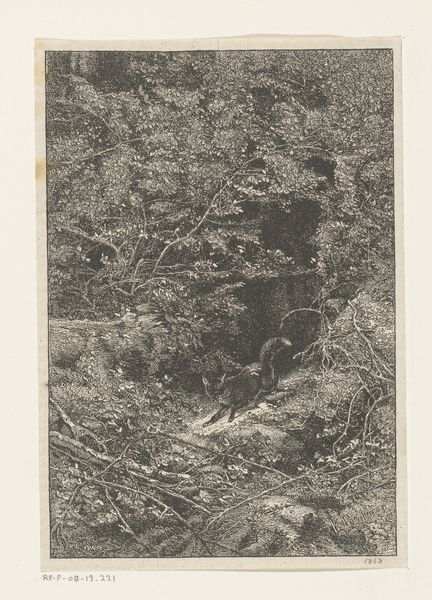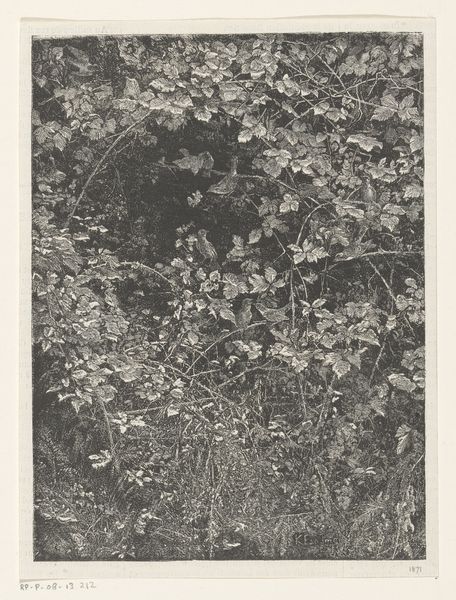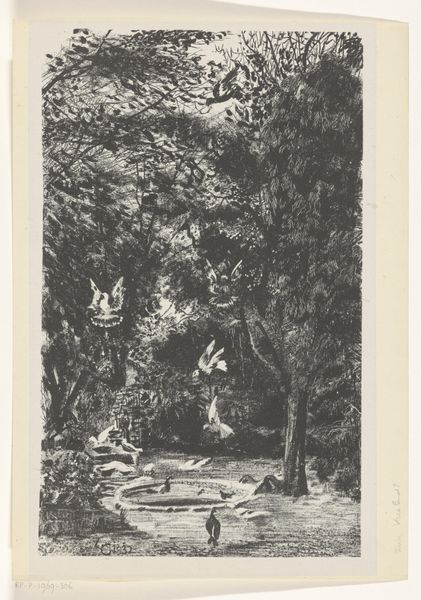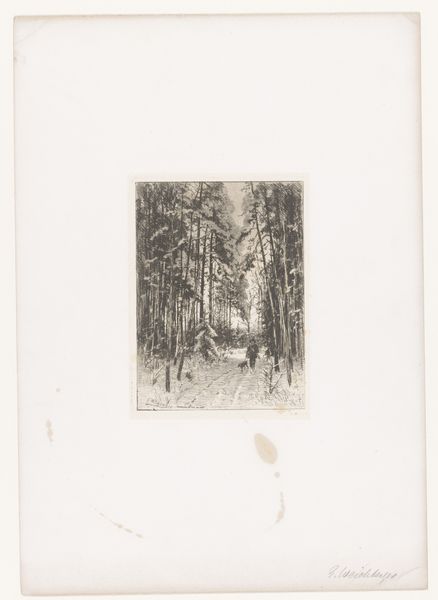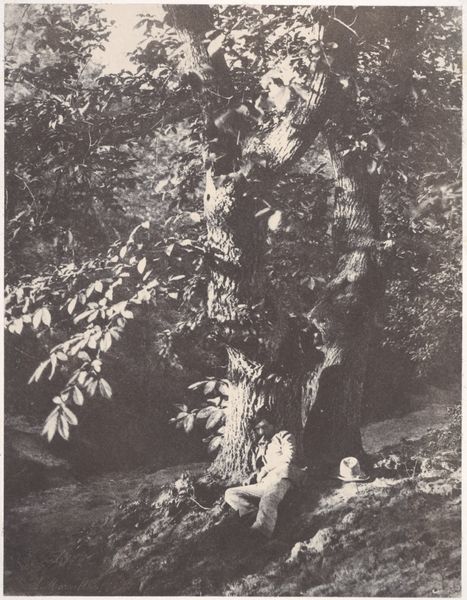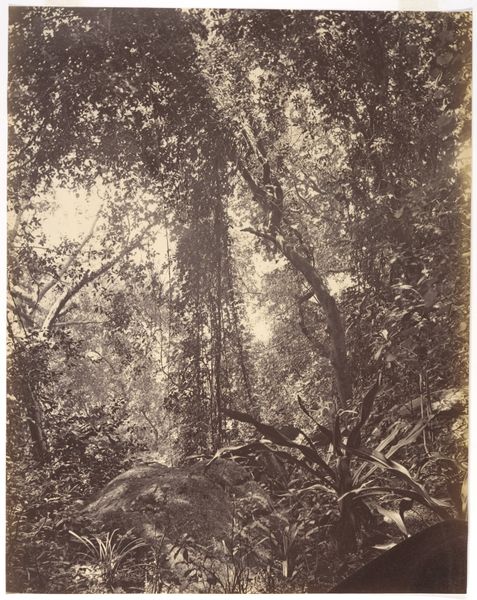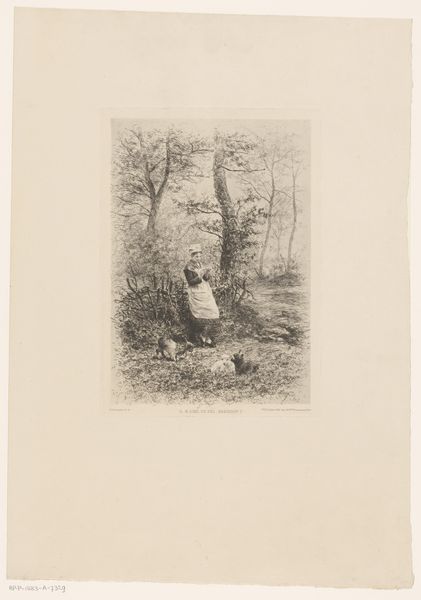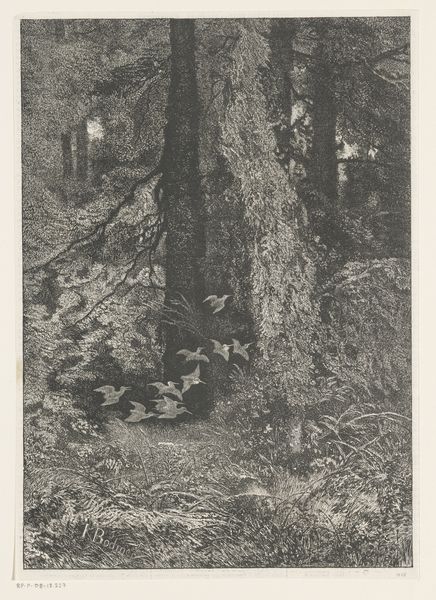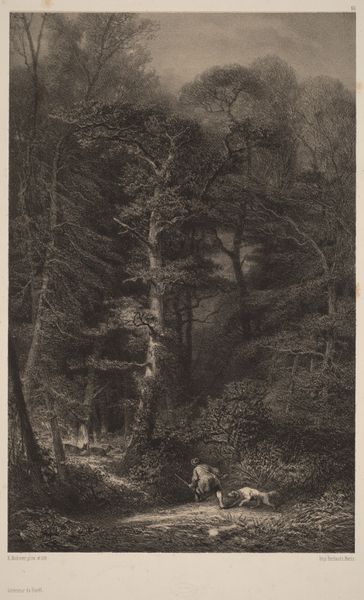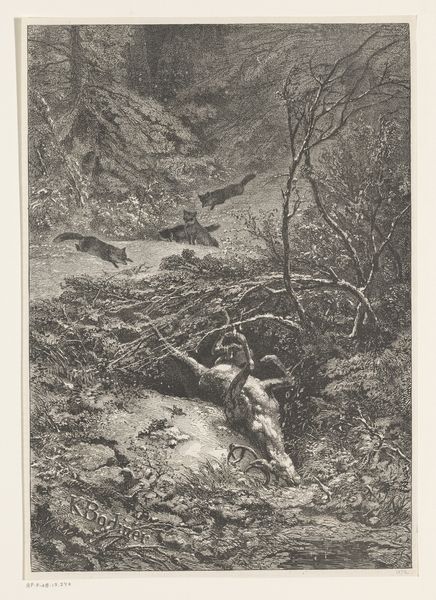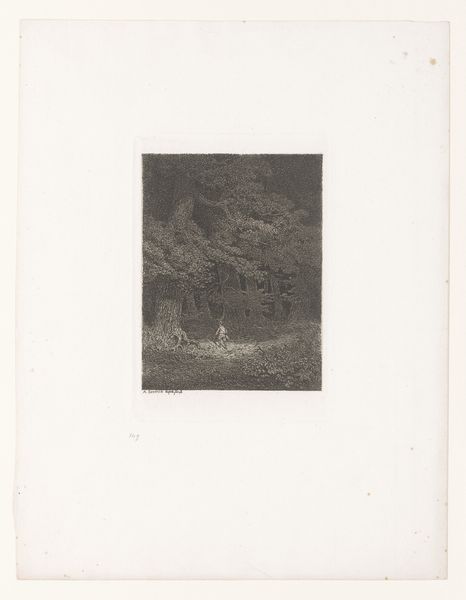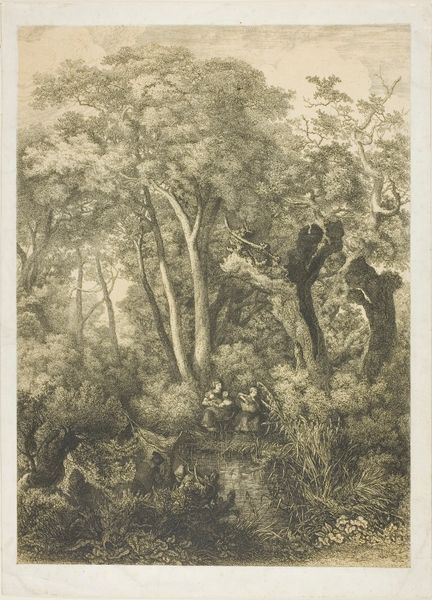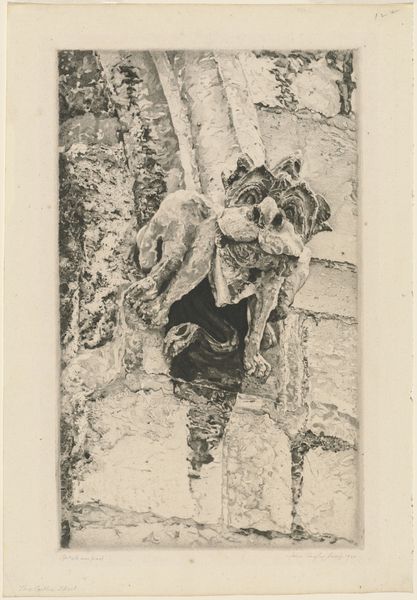
print, engraving
# print
#
landscape
#
engraving
#
realism
Dimensions: height 198 mm, width 153 mm
Copyright: Rijks Museum: Open Domain
Curator: Standing before us is "Duiventil," created in 1869 by Karl Bodmer. This landscape is rendered as an engraving and print, currently housed within the Rijksmuseum. Editor: My first impression is that it’s incredibly dense, almost claustrophobic, despite being a landscape. The contrast feels quite stark. It is simultaneously chaotic and incredibly balanced, from a composition standpoint. Curator: I concur, the density certainly contributes to its impact. It's intriguing how Bodmer utilizes the medium of engraving to create such a nuanced play of light and shadow. Consider the distribution of dark areas, anchoring the composition in contrast with the subtle gradations achieved by precise engraving techniques. It’s a masterful display of formal control. Editor: Absolutely. What interests me particularly is the labor invested in this print. You have to appreciate the time it took to physically cut and etch these minute lines into the printing plate to create such rich textures. Curator: Indeed, the materiality is fascinating. The transformation of the artist’s idea through the tangible process of engraving—the conceptual becoming physical—is a key point to consider. Editor: It makes one consider the status of the print itself, not merely as a reproducible image, but as an artifact resulting from dedicated labor within a broader historical moment. Was Bodmer commenting on our relationship to landscape, manipulating our built environment as evident with the dovecote? Curator: An intriguing suggestion. We see how form and context interplay here. The very arrangement of line and tone guides our perception, subtly underscoring, perhaps, a specific philosophical position in how the hand crafted elements can transform vision. Editor: Examining both the image's immediate formal qualities and considering the conditions of its making opens up the discussion about what a landscape like this signifies. Curator: Agreed. By understanding the methods and approaches employed in its creation we heighten our perception of its aesthetic qualities. Editor: By bridging form and process, our engagement can reveal layers of meaning that transcend initial impression.
Comments
No comments
Be the first to comment and join the conversation on the ultimate creative platform.
